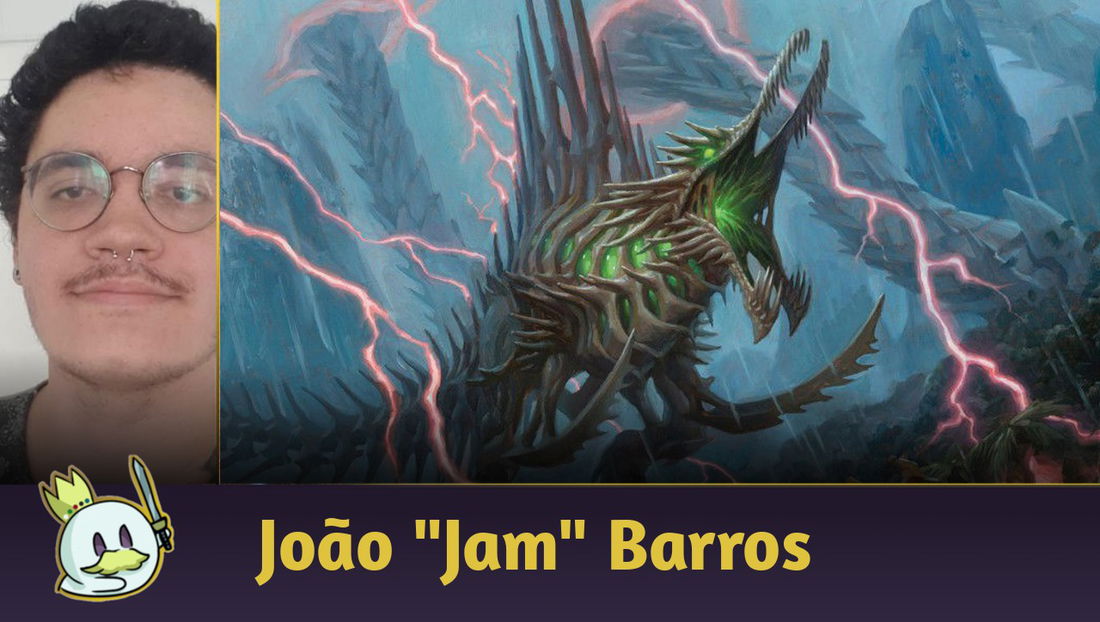Suplex is a card I've been wanting to talk about since it was leaked a few weeks ago, but we've decided to wait for its official reveal to analyze its potential for Pauper.
I'd be lying if I said that's the only reason I wanted to discuss the card — I really wanted to have the opportunity to share on this site the best thing you can do in Final Fantasy VI.
Suplex on Pauper - Review

There's an important debate surrounding the new card: Suplex has that line of text that defines some of Pauper's main Sideboard staples today — exile target artifact, which turns it into a potential answer to Affinity while also not making it so linear that it only deals with that matchup.
On the other hand, the new spell is a sorcery, which greatly hinders the interaction possibilities that a 

Ad
Dust to Dust was once the most played Sideboard card in the format due to the dominance of Affinity, and with the player base seeing the need to attack its mana as the main tool to deal with the archetype, just as what used to happen with Gorilla Shaman before the Bridges came out.
It was necessary. When your opponent was playing a bunch of 4/4s for cheap, enchanting creatures with All That Glitters or combo-killing with Atog, the only way to get Affinity into fair play involved slowing it down to the point where some decks supplemented this plan with Revoke Existence, while other strategies followed suit with Deglamer.
As the years went by, Affinity adapted, increasing its land count, using a basic Swamp to search for in case of Cleansing Wildfire and also getting around this problem with Deadly Dispute. With it now banned from the format, the possibility of attacking the archetype for mana improved, and Affinity responded by reducing its reliance on a third color to function.
In the current Metagame, there is a noticeable reduction in Dust to Dust in the Sideboards, which may be caused by the decline of Mono White Aggro or Boros Synthesizer, or also because the format's primary target has gone from Affinity or Broodscale Combo (RIP) to Mono Blue Terror, Faeries and Synthesizer Red — despite Affinity still being one of the best decks and demanding answers like Deglamer, Troublemaker Ouphe or Cast into the Fire in the 75 of many strategies.
How does Suplex compare to Abrade and Cast Into the Fire?

Abrade barely sees any play in Pauper today, but it offers instant-speed interaction that deals with Boarding Party, Thermo-Alchemist, and anything in between on your opponent's turn. It's worth noting that both don't deal with Writhing Chrysalis, which is still one of the best creatures in the format today.
Ad
What they both share is maindeck usability. While red Midrange/Tempo archetypes that would benefit from Suplex are declining, the card is a decent removal for Gruul Ramp if the Metagame demands more board interaction, while also disrupting Affinity's mana from Game 1 and dealing with Myr Enforcer and the like without too many concessions to Big Mana strategies that already tend to use all of their resources in the main phase.
When compared to Cast into the Fire, Suplex is noticeably worse in the Sideboard. Dealing damage to two different creatures at instant speed is better against Spellstutter Sprite and other faeries, while also taking cate of most Elves if the opponent doesn't have Spidersilk Armor.
These two separate damages also hold Sneaky Snacker's aggro for a turn, though Suplex solves this problem without it coming back the next turn. The damage exile effect also deals with ptroublesome creatures from archetypes running Blood Fountain or Pulse of Murasa, but these have never been prevalent enough to need sideboarding Scorching Dragonfire or Flame-Blessed Bolt in the past
Does Suplex have potential in Pauper?
Yes, the new card has the potential to eventually become a Pauper staple, but it requires specific conditions to reach that level.

The biggest draw of Suplex is that it is a maindeck card. In the current Metagame, with Cryptic Serpent and Tolarian Terror dictating the damage threshold of your non-burn spells, it's hard to imagine it appearing in many lists without considerable growth from Affinity and Jund Wildfire that would justify running exile artifact effects in Game 1, where it is the best card in that category.
Due to the very mechanic it is based on, Affinity is a deck that always has the risk of growing too much. It could be because a new artifact came out that makes casting multiple Myr Enforcers much easier, or because a new creature with Affinity appeared in a common slot and increased the consistency and speed of the archetype, or even because it is such an efficient Midrange that anything that deviates even slightly from fair leads it straight to broken — because of this volatility, we cannot rule out Suplex as a potential Game 1 answer in environments with more Affinity and less Mono Blue Terror in the future.
Ad
So, keep a set of this new removal in your binder. Just like Sabin Suplexed Phantom Train in Final Fantasy VI, it is possible that, one day, we will have to double down and Suplex a Drossforge Bridge, preferably in the second turn of Game 1.









— Comentarios
0Se el primero en comentar